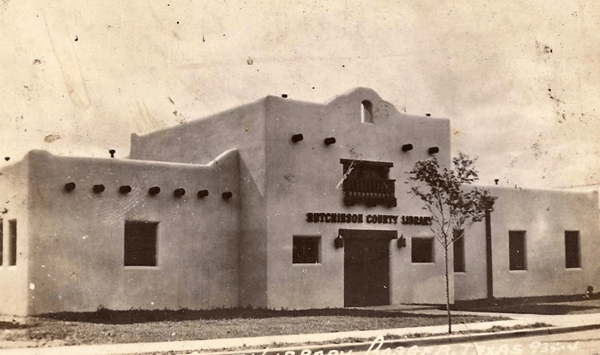|







___________
| |
Places: Phillips Blackhawks
Photo Archive

Page 4A Borger TX
|
 |
'Boomtown', Thomas Hart Benton,
Borger, Texas
Boomtown is Benton’s first Regionalist (or American
Scene) masterpiece and the result of a 1926 summer sketching trip which
took him to Borger, Texas. Early in 1926, oil was discovered in the
Panhandle of Texas; real estate promoter “Ace” Borger purchased land and
created the town whose population soared from zero to 30,000 within days!
 |
|


Borger Birthday Parade, Borger TX, 1930
Photo from:
http://www.usgwarchives.net/tx/hutchinson/history/baird/parade3.jpg
|
Benton wrote of Borger: Out on the open plain
beyond the town a great thick column of black smoke rose as in a volcanic
eruption from the earth to the middle of the sky. There was a carbon mill
out there that burnt thousands of cubic feet of gas every minute, a great,
wasteful, extravagant burning of resources for momentary profit. All the
mighty anarchic carelessness of our country was revealed in Borger. But it
was revealed with a breadth, with an expansive grandeur, that was as
effective emotionally as are the tremendous spatial reaches of the plains
country where the town was set. One did not get the feeling, in spite of
the rough shacks and dirty tents in which the people lived, of that narrow
cruelty and bitter misery that hovers around eastern industrial centers.
There was a belief, written in men’s faces, that all would find a share in
the gifts of this mushroom town…..Borger on the boom was a big
party….where capital…joined hands with everybody in a great democratic
dance.
Arthur Strawn, “An American
Epic”
Outlook & Independent
March 26, 1930
http://mag.rochester.edu/plugins/acrobat/teachers/pastInservices/Boomtown_Pappas.pdf
|
|
 |
 |
United Carbon Plant in background behind Mr. & Mrs. O.L. Goins. 1948
|
Carbon Black Plant c. 1955
Photo by Jack Moon; contributed by Jerry Moon
|
|
For many of us growing up in Phillips prior to scrubbers being installed,
carbon black was a normal part of our daily environment. Decisions were made
about hanging out laundry depending on the day's wind direction because
carbon black could ruin the laundry. Kids who played outside a lot had black
pores in their legs. Herefords grazing near the carbon black plants were not
'white face' but were dark gray or black -- just like the grass they ate,
the fences, and the nearby mesquite. Carbon black is produced from the
incomplete combustion of "sour" gas-natural gas. In 1931 thirty-one
plants in Texas produced 210,878,000 pounds of carbon black, or 75 percent
of the nation's output. In 1937 forty Texas plants, thirty-three of them in
the Panhandle, produced 82 percent of the nation's carbon black; the
Panhandle plants alone yielded 405,247,000 pounds. Rubber & plastics
companies use carbon black as a reinforcing filler in tires and other
products; smaller quantities are used as pigments in ink and paint. |

Carbon Black Plant 2008 |
|
|
|
 |
 |
|
6 East Street, Sunset Heights moves to Milner Road between
Borger and Fritch 1989
Photo by Jack Moon; contributed by Jerry Moon
|
Phillips House, Borger TX 2008 |
|
 |
 |
|
Phillips House, Borger TX 2008
|
Phillips House, Borger TX 2008 |
|
 |
 |
|
Phillips House, Borger TX 2008
|
Phillips House, Borger TX 2008 |
|
 |
 |
|
Hutchinson County Library, Borger TX 1950's |
North Plains Hospital, Borger TX 1950's |
|
 |
|
|
Hutchinson County Historical Museum, Borger TX |
|
|
 |
 |
|
Hutchinson County Historical Museum, Borger TX 2008
|
Hutchinson County Historical Museum, Borger TX 2008 |
|
 |
 |
|
Hutchinson County Historical Museum, Borger TX 2008 |
Nu-Way Cafe, Borger TX 2007
Photo courtesy of Martha K. Smith
|
|
 |
 |
|
Morley Theater, Borger TX 2008 |
Mesquite & Prickly Pear Cactus, Borger TX 2008 |
|
 |
|
Post Drive-In, Borger TX 1962
Photo courtesy of Les Hargis |

Continue to Photo Archive: Places
Page 4B

All email addresses have @ replaced with _AT_ to discourage spam. Webpage
updated: 24 October 2017
|
|

